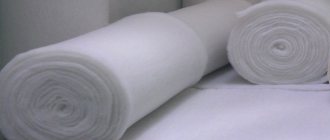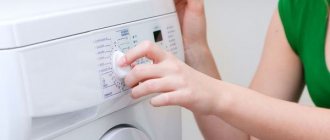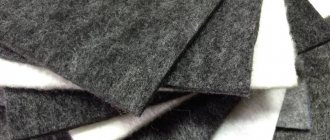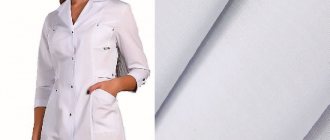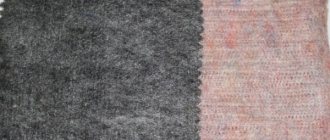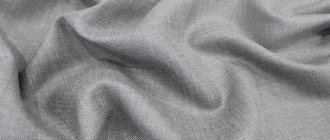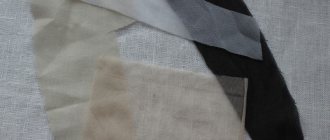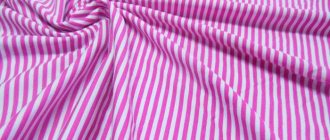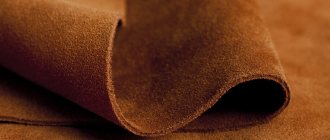Scope of application of nonwoven materials
The fact is that the scope of application of such paintings is extremely widespread. Examples include the following areas:
- manufacture of wearing apparel;
- geotextiles;
- shoe making;
- furniture production, etc.
These are just a few of the areas in which nonwovens have recently become widely used. Also, division into classes is carried out according to the composition of the raw materials. Naturally, natural ingredients are used in the vast majority of cases in the production of clothing and footwear.
Meanwhile, the most important criterion when choosing a specific nonwoven material is the method of its production. Today, the following are distinguished: adhesive, canvas-stitched, needle-punched, etc.
Introduction to Nonwoven Fabrics
So , non-woven fabric, what is it and where is it used? First of all, it is an independent product with its own characteristics and advantages, but also with disadvantages. Nonwovens are all around us and we use them every day, often without knowing it. Indeed, they are often hidden from view.
Non-woven fabrics can be made to be absorbent, breathable, drapeable, flame retardant, lightweight, lint-free, cast, soft, stable, tough, tear resistant, water repellent if necessary. It is obvious, however, that not all of the mentioned properties can be combined in one nonwoven material.
Read about: twill weave fabric.
Application of nonwoven materials:
- Personal and hygiene products such as baby diapers, feminine hygiene products, adult incontinence products, dry and wet wipes, and bra pads or nasal strips.
- Healthcare items such as operating room curtains, gowns and bags, face masks, bandages and swabs, bag liners, etc.
- Clothing: gaskets, insulation and protective clothing, industrial work clothing, chemical protection suits, footwear components, etc.
- Home: napkins and rags, tea and coffee bags, fabric softeners, food wraps, filters, bed and table linens, etc.
- Automotive: trunk lining, shelves, oil and cabin air filters, molded liners, heat shields, airbags, strips, decorative fabrics, etc.
- Construction: roofing and tile lining, thermal and sound insulation, cladding, lifting, drainage, etc.
- Geotextiles: asphalt overlay, soil stabilization, drainage, sedimentation and erosion control, etc.
- Filters: air and gas
- Industry: cable insulation, abrasives, reinforced plastics, battery separators, satellite dishes, artificial leather, air conditioning.
- Agriculture, home environment, leisure and travel, school and office, etc.
Use as insulation and lining
Indeed, nonwoven materials are quite often used in the field of insulation. Thanks to the described production methods, high heat-saving qualities are achieved.
Naturally, depending on the purpose, materials using a large number of synthetic fibers can also be used. As a rule, such options are made using the adhesive method.
Lining materials are made by needle punching. Often, such options are used to further enhance the strength and rigidity of the fabric. The most common example is non-woven fabric.
It strengthens not only collars, but also stands, cuffs, hems of dresses, etc.
In addition to all of the above, nonwoven materials are also used in the production of geotextiles. It is used to provide protection against displacement of soil layers in an area relative to each other (there are other applications).
See also:
- Find out what needle-punched geotextiles are.
- Recommendations that will make it possible to open the front door - https://archivis.ru/post/articles/uslugi/kak-vskryit-vhodnuyu-dver
The video demonstrates various nonwoven materials:
Classification and range of nonwoven materials
Category: Clothing
Nonwoven materials are classified according to the following criteria:
- by purpose: household, wiping, container, packaging, shoe, base for artificial leather and oilcloth, cushioning, filtering, furniture and batting;
- by raw material composition: cotton, wool blend, silk and linen;
- by production method: canvas-stitched, thread-stitched, fabric-stitched, needle-punched, adhesive, combined.
Household nonwoven fabrics are divided into materials for clothing, footwear, and household items.
Materials for clothing are divided into fabrics for the top, cushioning and insulation.
Top fabrics
There are cotton, wool blend and chemical fibers using various technologies.
Faux fur coats
are distinguished by increased heat protection, thickness, and weight.
In terms of structure, they can be canvas-, thread-, or fabric-stitched; in terms of finishing, they can be plain-dyed, melange, or pile. Fabrics for winter use are subjected to felling or napping. Suit coats
are varied in raw material composition and finishing. The surface can be smooth, embossed, with one- or two-sided pile. For the manufacture of home and beachwear, terry stitched fabrics are used.
Padding materials
designed to increase the dimensional stability of the product. Depending on the purpose, they can have varying degrees of rigidity, dimensional stability, elasticity, resistance to washing and dry cleaning. Needle-punched and adhesive non-woven fabrics are used. Used as a lining in the waistbands of skirts and trousers, sides, collars, cuffs and other clothing parts. Some of them can also serve as insulating materials.
Insulation materials
They are distinguished by softness, elasticity, good heat-protective and hygienic properties. They are used as insulating pads and linings for outerwear, hats, as well as sleeping bags and blankets. They are produced by needle-punched, adhesive, canvas and fabric-stitched.
Shoe materials are divided into uppers, linings, pads and insoles. For the top, half-wool, cotton and chemical fiber fabrics are used; for insulated lining - half-wool and cotton fabrics such as cloth and flannel. They are made by knitting-stitching, needle-punching and combined methods. In terms of finishing - plain dyed, melange and variegated.
Materials for household products include fabrics for towels and sheets, furniture and decorative fabrics, wall and floor coverings, blankets, bedspreads, rugs. Fabrics for towels and sheets are produced from cotton, using thread-stitching, fabric-stitching (terry), and needle-punching methods. Based on the finishing, they are distinguished as plain-dyed, printed, bleached, melange, etc. Furniture and decorative fabrics include fabrics for upholstery, making tablecloths, napkins, curtains, etc. They are produced in various raw materials and finishes. Canvas-stitched, thread-stitched and adhesive fabrics are used. For the manufacture of blankets, bedspreads and rugs, half-woolen needle-punched, canvas-stitched and thread-stitched fabrics are used. Floor and wall coverings are made from plain-dyed and melange needle-punched and adhesive non-woven fabrics.
Types of nonwoven materials
Nonwoven materials are products prepared from chemical fibers. There are several types of non-woven coverings available for sale, differing in technical parameters and properties. Similar results were achieved using a variety of manufacturing techniques. To make it easier to decide, it is worth familiarizing yourself with the main types.
Spunbond
The preparation of such material is carried out by pressing pre-prepared raw materials through special dies, the diameter of which is relatively small. Only after this the fibers are thoroughly cooled, drawn out, and laid on a flat surface. In order to connect the prepared and cooled fibers, a calender is used.
The fabric prepared in this way is distinguished by its increased level of density, wear resistance, and strength. This material is waterproof, easy to store and use. It is quite often used in the process of preparing non-sterile products.
Spunlace
The preparation of this nonwoven material is carried out practically according to the same principle as spunbond. The only difference is that the fibers are intertwined using water jets that are supplied under high pressure. This type of non-woven material is made from polypropylene, viscose, and polyester fibers. In some cases, several types of fibers are combined. As a rule, several types of fibers are combined if it is necessary to enhance certain properties of the fabric.
This type of nonwoven material has the following advantages:
- Excellent tactile comfort.
- The coating does not interfere with free air circulation.
- The durability of the coating is quite high.
- The material has excellent protective properties.
- The elasticity coefficient of the coating is quite low.
This type of non-woven material should not be used in excessively humid climates, since it absorbs moisture well, and its weight increases.
Raw materials for the production of nonwoven materials
Cellulosic man-made fibers of all lengths and purity levels and with distinctly different properties are at the disposal of the non-woven bonded fabric industry.
All of them are characterized by the ability to absorb quite a large amount of moisture. It recommends their use wherever this property is useful for the production of non-woven bonded fabrics, and/or the use of non-woven bonded fabrics is another precondition.
Nonwovens are textile fabrics consisting of separated fibers that are properly positioned using application-oriented technologies. To ensure the functionality of the finished product, they are connected. For this reason, the choice of fibers and possibly binder materials is of particular importance: this concerns the fiber raw material and the size of the fibers. Typically, they have a larger share in the creation of non-woven fabrics than is the case in textile filament fabrics. Bonding agents can also affect the quality of nonwovens.
Fiber materials used for nonwovens
Almost all types of fibers can be used to produce bonded nonwoven fabrics. The choice of fiber depends on:
- required fabric profile;
- economic efficiency for the production of non-woven bonded fabrics;
- chemical fibers of both cellulose and synthetic origin.
Because a wide range of fabrics are either being developed or already in production, it is impossible to name and describe all fabrics and fibers. The most important details will be given below.
- Plant fibers.
The most important component of plant fibers is cellulose, which is hydrophilic and hygroscopic. Besides cellulose, plant fibers are also composed of several other substances that affect their properties. Cotton is the most important plant fiber used to produce non-woven bonded fabrics.
- Animal fibers.
Of all the animal hairs, only sheep's wool has any value in the production of non-woven bonded fabrics. Because its price is high, it is used mainly in the form of regenerated wool or scraps. Variations in the quality and impurities of reconstituted wool, as well as the chemical and physical properties determined by its origin, place restrictions on its use.
- Artificial fibers made from synthetic polymers.
The field of nonwoven bonded fabrics has become so broad that to some extent it includes almost every type of fiber in existence. However, certain types of fibers have become predominant in certain areas.
The two main types of fibers are polyamide 6, commonly known as perlon, and polyamide 6.6, commonly called nylon to distinguish it from perlon. The number after the word "polyamide" indicates how many carbon atoms are present in each molecule that makes up the polyamide.
© 2021 textiletrend.ru
Composition of nonwoven materials
Currently, nonwoven materials are prepared from:
- Natural fibers: wool, cotton, linen.
- Chemical fibers: polyamide, viscose, polypropylene, polyester, others.
- Secondary raw materials obtained from waste from chemical and other industries.
In order to ensure reliable connection of fibers, manufacturers quite often use lavsan, glass, nylon or metal threads.
Before raw materials go into production, they must be prepared. Preparation processes are determined depending on what kind of raw materials and what manufacturing technique is used.
Manufacturing technologies of nonwoven materials
Nowadays there are several main manufacturing technologies:
- Aeroforming
During the formation of the web, fibers and air are mixed, resulting in a homogeneous mixture. After this, the prepared composition is applied either to an airtight tape or to a special wire mesh. Material prepared in this way is actively used by manufacturers of disposable hygiene products.
- Wet and dry canvas forming
Using water or air, the fibers are dispersed. Then they are placed on a fairly thin membrane, having previously separated water and air. The coatings are homogeneous, reliable and durable.
- Spunbond
In this case, the fibers are formed using spinnerets. Pre-melted polymers are passed through them. In order to stretch the fibers and give them shape, they are exposed to an air flow. After this, the fibers are placed on a conveyor to form a web. Both water jet bonding and heat treatment can be used to bind the threads together.
Properties of nonwoven materials
Nonwoven materials have a number of unique properties:
- Uniformity of structure. Due to the fact that the fibers used in production are connected as firmly as possible and are distributed evenly, the load on the material is distributed evenly along the entire perimeter. This eliminates the possibility of deformation, excessive tension of the coating, or violation of its integrity.
- Density. Since nonwoven materials have a higher level of density, they can be used to minimize the evaporation of moisture from the ground. As a result, watering rates will also be reduced.
- The material helps maintain an optimal temperature level, due to which the soil warms up much faster.
- High level of strength. Neither mechanical load nor chemical components affect the basic properties of the nonwoven material. Therefore, it can be used in the most severe conditions.
- Long period of use. Most types of non-woven fabric can be used for 10 years or more. Manufacturers managed to achieve similar results by connecting different types of fibers and combining them. Do not forget that the service life is influenced by both correct installation and compliance with storage conditions.
- Ease of use. The instructions supplied by the manufacturers contain detailed information regarding installation rules. By following them, you can implement everything quite quickly.
- All products undergo a certification process.
Application areas of non-woven fabric
Today, nonwoven fabrics are used in many fields. Let's highlight the main ones:
- They are used to make linings for the clothing of rescuers, firefighters and other specialists who often come into contact with hot air and elevated temperatures.
- Non-woven fabrics are often used in the manufacture of filters for both liquids and air masses. Filters made from such fabrics are characterized by increased strength and efficiency.
- Non-woven fabrics are often used in the construction and repair industries when it is necessary to reduce the load on certain structures or strengthen the surface. Nowadays they are increasingly used by landscape designers, since with their help it is easier to plant plants, prepare a site, etc. The introduction of the material allows you to reduce the project implementation period.
- Nonwoven materials are also used in the road industry. After all, with their help you can create a more reliable substrate and strengthen the slope. By incorporating the material into the road structure, costs can be reduced while providing a durable surface.
Undoubtedly, the number of industries in which non-woven fabric can be used is enormous, since it has many advantages.
Nonwoven Density
Manufacturers supply non-woven material of various densities. To make it easier to navigate, it is worth familiarizing yourself with the features of canvases of different densities.
- Lightweight non-woven fabrics (14-17 g/m2)
Material with this density is only available in white. It can be used without installing additional supports, placing it directly on plants or soil. Such actions will not cause any harm, since the material is lightweight. Its use will create an optimal microclimate for plants.
Despite the fact that the coating has a low density, it can be used to provide reliable protection of the root system and plants from insects and rodents.
- Medium non-woven fabrics (28-42 g/m2)
A coating with this density is also available only in white. The number of areas in which it can be used is much greater. For example, it is excellent for constructing greenhouses and greenhouses.
- Thick non-woven fabrics (60 g/m2)
Nonwoven materials with the highest density are available not only in white, but also in black.
Dense coatings can also be used to mulch soils. Its introduction into the soil makes it possible to prevent the germination of various weeds. If you use a black coating for these purposes, you can provide additional heat to the seedlings.
Not long ago they began supplying innovative two-color fabric. It consists of white and black layers. When laying, the black layer is placed directly on the ground. Since the white layer is at the top, the soil warms up more slowly. The temperature regime is maintained for a long period. This has a positive effect on the growth of various plants. A denser fabric is advantageous to use at low temperatures, as it partially protects the root system from frost.
When buying non-woven fabric, you need to take into account various characteristics and technical indicators. Only in this case will it be possible to purchase high-quality material.
Here you can buy non-woven geotextiles: https://novamsk.ru/shop/4-geotekstil/
| If you liked this page, recommend it: |
Areas of application
The wide range of applications of non-woven textiles is primarily due to the properties of the material and its affordable cost. The most expensive in this segment are felt, felt and isosoft insulation.
Textiles are used not only in the clothing and footwear industries, but also in technical fields:
- agriculture: equipment for greenhouses, greenhouses and for protecting soil from weather conditions and pests;
- construction: as finishing, insulating and reinforcing coatings;
- medicine: for the production of workwear, protective masks, disposable underwear;
- service sector: for disposable napkins, tablecloths and other items;
- production of hygiene products: pads, diapers, diapers;
- automotive industry: for the manufacture of filters, airbags and for interior lining and trunks.
Types of nonwoven materials
According to their purpose, nonwoven types of materials are divided into:
- technical;
- household;
- furniture;
- basis for artificial leather;
- gaskets;
- packaging
Let us dwell in more detail on everyday ones (most often encountered in everyday life). These include fabrics that are used in one way or another for sewing clothes, making textiles and making shoes.
Based on their composition, such materials are divided into:
- cotton (for light clothing and home decorative textiles);
- semi-woolen (outerwear);
- terry (beach or home wear).
Household nonwoven materials can be produced with a pattern, melange or plain-dyed.
To make them, a variety of production methods are used, including napping, felting, canvas stitching, fabric stitching and thread stitching.
Nonwoven materials used as insulation deserve special discussion. They have excellent elasticity and lightness, while perfectly preventing heat loss from the consumer when wearing clothing in which they are used.
Today, such insulation materials have received well-deserved recognition among clothing manufacturers, because they are superior in terms of hygiene to their outdated counterparts. As a rule, they are made using the adhesive method, canvas stitching, thread stitching, and needle punching.
You can view our range of fabrics in the catalogue.
Popular Nonwovens
Among the most popular:
Felt
The fabric is based on goat and rabbit fluff. The material is equally good both from the front and from the back. Doesn't crumble. Felt is used to make hats, shoes, outerwear, children's toys, and decorative items. To obtain a pleasant sheen and smooth surface, the composition includes viscose and synthetics.
felt toys
spunbond
non-woven fabric napkin
spunlace napkins
Isosoft
Non-woven fabric with a polyester base, which has heat-saving properties. Warms 10-12 times better than synthetic winterizer, despite being 4 times thinner. A safe material that can be used to insulate even children's clothing. Machine washable. The only negative is the high price, which is compensated by the long service life and excellent characteristics.
Thinsulate (“subtle warmth”)
Polyester-based material that retains heat no worse than swan and eider down. Thin, hollow, spiral-twisted fibers allow products made from them to keep their shape well.
Fact: Light clothing with Thinsulate is warm even at ─40°C. There is only one drawback: the accumulation of static electricity, which requires special treatment to eliminate.
Spunlace
A durable, breathable fabric made from polypropylene, viscose or cotton fibers bonded under high pressure using hydro-jet technology. It is used mainly for the production of wet wipes.
Spunbond
Soft, pleasant to the touch, water-repellent material used in the manufacture of disposable gowns, caps, sheets, napkins. Consists of polypropylene fibers bonded together by heating.
Sintepon
Elastic voluminous lightweight insulation. It is used in sewing outerwear, making upholstered furniture, shoes, sleeping bags, toys, blankets and pillows. Synthetic fibers are joined using thermal or adhesive methods.
Batting
Non-woven material made from natural or mixed waste from the clothing and textile industry. Knitting or needlepunch technology is used to connect fibers. Batting with gauze sizing has greater durability. Among the disadvantages: heaviness, water absorption, wool fibers being eaten by moths. Scope of application: production of work clothes.
Types of non-woven fabrics
Most of the fabrics known to us consist of threads intertwined in different ways, but some of them have a special structure. We are talking about a group of materials called non-woven. They are not made of threads, but of small fibers of various compositions, fastened together. Most of these fibers have a rough surface and villi, thanks to which they can be combined into a fabric that will retain its shape and will not fall apart during use.
The fibers from which the new type of textile fabric is created are much thinner than the thinnest threads, so when they adhere, a product with a uniform and homogeneous structure is formed. It is ideal for thermal insulation, delays sound waves, and also serves as an obstacle to dust and other small particles.
Nonwoven materials can be divided into the following groups:
